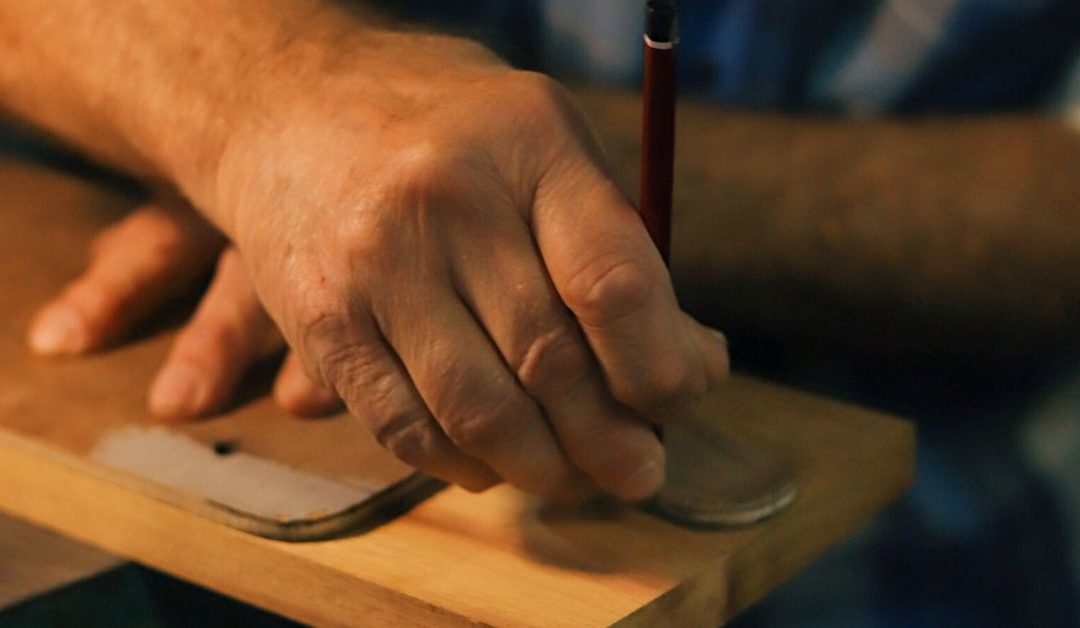During the Golden Age, Morocco and the Netherlands had a thriving exchange of woodworking techniques and ideas.
During this time, two different cultures from faraway places traded with each other and learned from each other.
In this article, I will explore how these countries improved their skills by sharing knowledge and ideas to make better things.
One reason this happened was because Dutch artisans moved to Morocco during the 17th century. They brought new tools, designs, and practices which helped both sides get better at what they were doing.
Studying records from that time shows how Moroccan and Dutch woodworkers collaborated. Plus, how they shared knowledge to improve their designs.
Historical Context Of The Golden Age
During the Golden Age, Morocco and the Netherlands exchanged woodworking ideas.
Dutch artisans moved to Morocco to learn new techniques and get different materials they couldn’t find in Europe.
They used these exotic woods to make beautiful furniture designs, mixing traditional and modern styles.
Moroccan craftsmen learned from the Dutch and made their pieces even more unique.
This collaboration between the two cultures led to a special style known as ‘Orientalizing’ that influenced Europe too.
The ongoing exchange of ideas helps both countries grow in woodworking and shape their identities.
Dutch Artisan Migrants In Morocco
During the Golden Age, Dutch artisans went to Morocco, and it had a big influence on woodworking. Artisans from both countries learned from each other and shared ideas. Dutch artisans improved their skills by using Moroccan techniques and materials.
The exchange of knowledge led to new tools and furniture styles. Moroccan craftsmen learned from Europeans, and both sides grew to appreciate each other’s artistry.
This time in history created a lasting impact on how woodworking evolved in both Europe and North Africa. The lessons learned back then continue to inspire artists today.
Improved Production Methods
At the dawn of the golden age, Moroccan and Dutch woodworking underwent a revolution in efficiency. This was due to an increased level of skill sharing between the two cultures. The cultural integration fostered during this era led to a deeper understanding of each other’s practices. Plus, this helped them build upon existing knowledge.
The results included:
- Improved production methods:
- More efficient division of labor
- Greater use of specialized tools
- Innovative designs and techniques:
- New joinery techniques
- Detailed carvings and engravings
This exchange of ideas not only improved existing craftsmanship but gave rise as well to new forms that had never been here before. As such, it played an important role in helping shape what would become one of the most impressive eras in woodworking history.
Exchange Of Tools And Designs
Long ago, the Netherlands and Morocco exchanged woodworking techniques and ideas during the Golden Age. It was a way for two different cultures to learn from each other and it had a lasting impact on Moroccan craftsmanship. Dutch designs influenced many of their unique traditions.
To understand this exchange, we need to examine how the two regions adapted and exchanged tools. In the Netherlands, woodworkers used traditional hand tools for softwoods like pine or fir. But in Morocco, they needed to change these tools to work with local hardwoods like cedar. They developed new methods for sharpening blades without conventional grinding wheels or machines.
Both cultures influenced each other’s practices while keeping their styles. Moroccan carpentry had intricate geometric patterns inspired by Islamic art. But, Dutch joinery focused on clean lines and precise angles. This exchange shaped furniture production throughout Europe during the Golden Age.
These exchanges allowed craftsmen across Europe to gain from advances in technology, no matter where they were. It demonstrated the power of cooperation, fostering creativity and innovation in challenging times. Today, we still see the influence of this collaboration.
Unique Moroccan Woodworking Traditions
During the Golden Age, woodworking in Morocco and the Netherlands have a connection. The Dutch-influenced Moroccan carpentry by bringing new materials and technologies. In return, Dutch craftsmen learned from Moroccan techniques and found unique pieces from Europe.
During this time, Moroccan woodworking used natural materials. These include cedarwood, olive branches, and palm leaves. These materials had special meanings, symbolizing wealth, strength, and protection in their culture.
Carved animal figures and patterns told stories and represented their heritage. They used motifs too like stars, suns, and geometric shapes in furniture designs.
The exchanges between Morocco and the Netherlands led to hybrid styles and economic opportunities for both. It helped them understand each other’s art practices, shaping global art history even today.
Now we can explore more about how Dutch influence affected Moroccan woodwork over the centuries.
Dutch Influence On Moroccan Woodwork
During the Golden Age, Morocco and the Netherlands had a cultural fusion in their woodworking.
Artisans from both countries shared techniques and ideas. The fusion led to ornamental furniture designs with intricate Dutch-inspired carvings.
Bright colors became popular because of new pigments imported from Europe.
European tools and workshop practices helped create more complex designs in Moroccan woodwork.
The collaboration of Moroccan tradition and Dutch craftsmanship led to creativity and innovation. This was during the Golden Age changing Moroccan woodworking forever. It shows how two cultures can work together to create something special.
Records Of Exchange And Collaboration
During the Golden Age, Morocco and the Netherlands exchanged woodworking techniques and ideas. This cultural fusion was particularly evident in their shared customs:
- Both countries used similar tools for shaping objects from wood, such as axes and chisels.
- They both incorporated intricate geometric patterns into their designs. Thus, creating beautiful furniture pieces.
- Moroccan craftsmen created detailed marquetry using various woods and Islamic art patterns.
This exchange brought together two distinct traditions. Plus, allowed each culture to keep its unique characteristics. The combination of these two styles created a special kind of craftsmanship that people loved at the time.
During the Golden Age, Morocco and the Netherlands worked together. This brought a significant impact on craftsmanship then and even today.
Impact Of Exchange On Craftsmanship
In the Golden Age, Morocco and the Netherlands exchanged woodworking techniques, impacting craftsmanship.
They collaborated and came up with new ways to make beautiful things faster and better. Dutch metalworkers brought special tools, and Moroccan craftsmen shared traditional methods.
By sharing their knowledge, they created new styles and designs that combined elements from both cultures.
These exchanges left a lasting legacy on woodworking, and we can still see their influence on furniture and decorations today.
Without this cross-cultural dialogue, woodworking wouldn’t have grown so much during the Golden Age. Plus, we wouldn’t have the rich creative heritage we have now.
Frequent-Asked Questions
What Effect Did The Exchange Of Woodworking Techniques And Ideas Have On The Economy Of Morocco During The Golden Age?
During the Golden Age, Morocco and the Netherlands had a lot of trading and sharing of woodworking ideas. This helped Morocco’s economy grow because they learned new ways to work with wood. It as well improved their craftsmanship, created jobs, and increased exports, making life better for many people.
How Did The Moroccan And Dutch Craftsmen Collaborate To Create New Designs?
Moroccan and Dutch craftsmen worked together during the Golden Age to create amazing pieces of art. They combined traditional Moroccan styles with modern Dutch techniques. Thus, their work became famous worldwide for its skillful craftsmanship.
The products they produced were so impressive that they became prized possessions among those who owned them.
What Were The Long-Term Implications Of The Exchange Of Woodworking Techniques And Ideas On Both Cultures?
Long ago, Morocco and The Netherlands shared their woodworking techniques and ideas during the Golden Age. This exchange of skills and knowledge had a big impact on both cultures’ artistry and led to new designs and traditions. It as well helped create economic growth by introducing new markets for its products.
Was The Exchange Of Woodworking Techniques And Ideas Good For The Craftsmanship In Both Countries?
During the Golden Age, Morocco and The Netherlands exchanged woodworking techniques and ideas. This was then considered revolutionary! It opened up lots of possibilities for craftsmanship in both countries and changed how they traded and shared culture.
Moroccan artisans improved their skills. But, Dutch craftsmen learned new methods, materials, and tools to create their unique style. Together, they made woodworking into an art form, and their beautiful works are still admired today.
How Did The Dutch Influence On Moroccan Woodwork Manifest Itself In The Designs Of The Period?
During the Golden Age, Dutch influence on Moroccan woodwork was evident in the designs of this period.
This cultural blending had an economic impact too! Trade between Morocco and the Netherlands allowed craftsmen to learn new techniques. This led to more detailed and fancy results.
Some traditional designs stayed popular. But, there was a noticeable shift towards a more European style with flowery carvings and complex shapes.
These changes helped both countries’ craftsmanship. Plus, showed the success of exchanging ideas and techniques during this time.
During the Golden Age, Morocco and the Netherlands exchanged woodworking techniques and ideas. This collaboration led to new and innovative designs that combined elements from both cultures. They created more than 200 luxury furniture pieces together. This showed the power of international cooperation.
This exchange had positive effects on both countries. It improved the economy in Morocco and created long-lasting connections between the two cultures. It as well sparked a new appreciation for craftsmanship and paved the way for future collaborations.
Despite barriers, two cultures united to create something beautiful.







